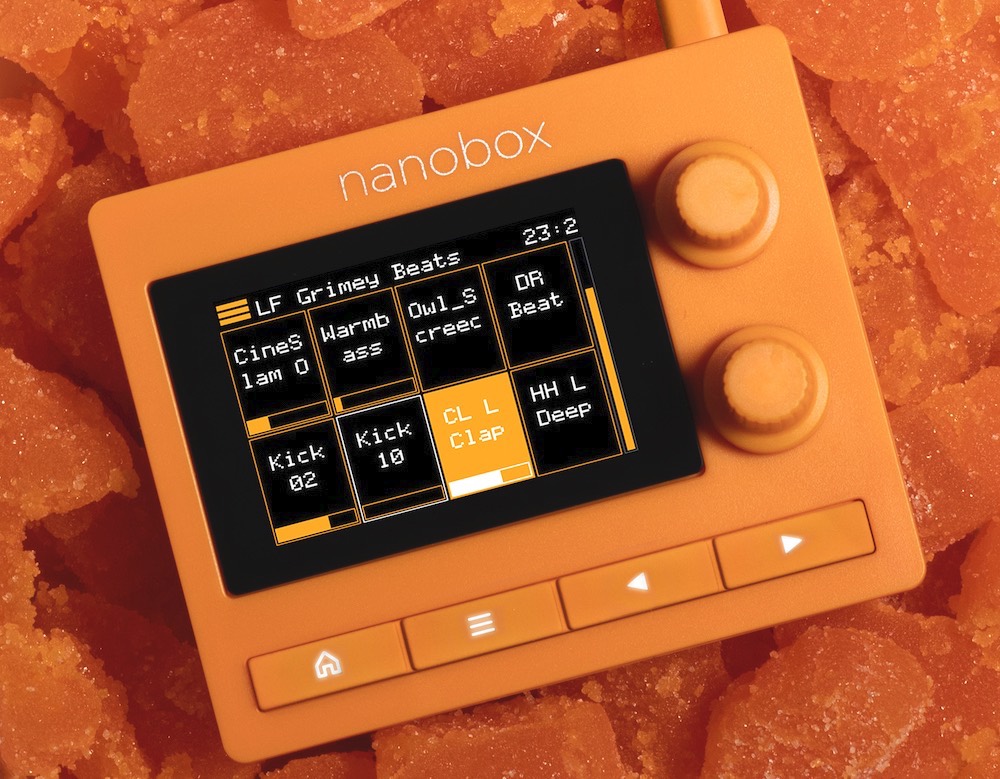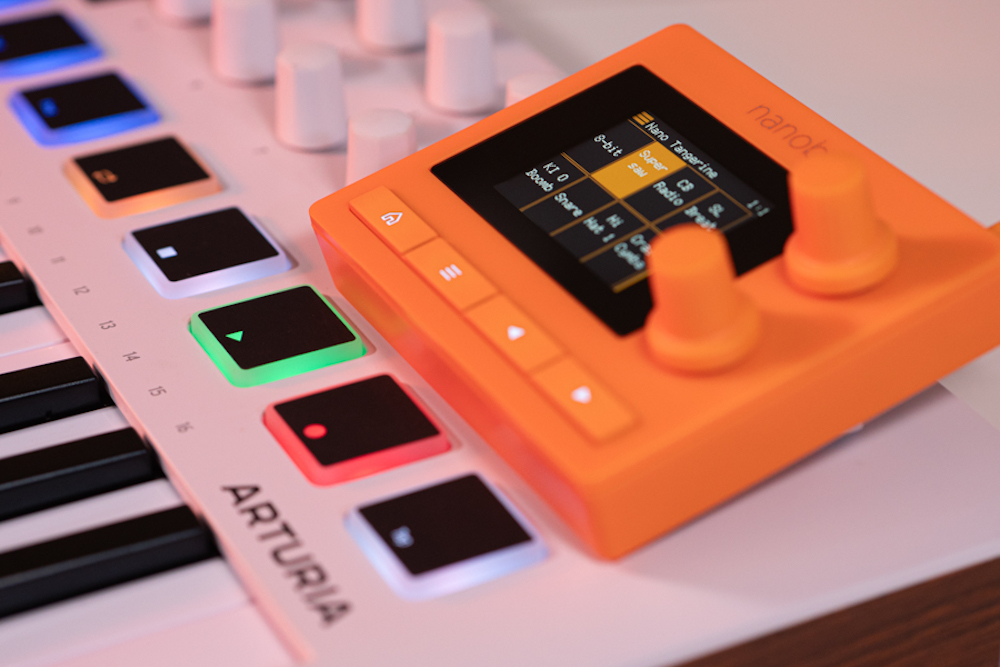1010 Music Nanobox Tangerine review | Juno Daily
The latest in 1010’s Nanobox series is a versatile ‘streaming sampler’ groove box, with an emphasis on multi-sampling instruments. Greg Scarth puts it to the test.

The fourth release in the brand’s compact groovebox series, the 1010 Music Nanobox Tangerine is the latest in an exciting series of hardware devices. Described as a ‘streaming sampler’, the Tangerine joins the Razzmatazz drum machine, Fireball wavetable synth and Lemondrop granular synth in a range of tiny instruments with built-in sequencers. Each one has the same basic setup of a 2-inch touchscreen, stereo audio in and out, and an intuitive, pad-based approach to programming.
The Tangerine isn’t the first sample-based instrument in 1010’s line-up, so it’s worth starting by comparing it to the hugely popular Blackbox ‘compact sampling studio’. The Blackbox is a slightly bigger device, with a 3.5-inch touchscreen as opposed to the 2-inch screen of the Nanobox models. At £383.99, the Tangerine is substantially cheaper than the £617.99 Blackbox, but there are a couple of areas where the smaller model actually outperforms its big brother. Most notably, the Tangerine can work with a whopping 576 samples simultaneously, whereas the Blackbox can have a maximum of 64 per pad, 80 per preset. The Tangerine doesn’t replace the Blackbox by any means, but instead offers a different kind of approach, more focused around multi-sampling. We’ll come back to the potential advantages of the Blackbox in due course, but first let’s dig into what makes the Tangerine special.

Within any project on the Tangerine, you have eight pads to play with. Each one can hold a one-shot sample, a loop or, crucially, a multi-sampled instrument. Multi-sampling is the act of recording a sample of an instrument – let’s say a synth – playing back multiple notes and, if you want to go a step further, multiple velocities. For the best results, you’d record every note up and down the keyboard separately, creating an instrument with hundreds of individual samples. You can then play the instrument back on a device like the Tangerine, triggering a unique sample for each note and velocity rather then speeding one sample up or slowing it down to change its pitch.
This is really the major strength of the Tangerine above most other small sampler devices in this kind of class. A more basic, drum-focused sampler like the Nanobox Razzmatazz uses individual samples (along with FM synthesis) to create sounds, whereas even the larger Blackbox can’t handle such complex multi-sampled sounds as the Tangerine’s whopping 576 sample capacity.

Loading up the piano multi-sample instrument provided with the Tangerine, the advantages of multi-sampling are immediately obvious. You’ll need a suitable MIDI controller to hear the benefits, of course, but the lifelike authenticity of the piano is undeniable, with the different note samples and velocity layers giving a truly realistic sound. The real ace up the sleeve, though, isn’t in playing back factory preset multi-samples so much as in creating your own. The Tangerine makes it easy to create your own multi-sample instruments. Recording acoustic instruments is a slightly labour-intensive process of recording or loading WAV samples, but MIDI-controlled instruments can be multi-sampled using an automated process: connect the MIDI output of the Tangerine to your chosen synth, then hook the synth’s audio output up to the Tangerine’s input. MIDI triggers will be sent, and the resulting sounds automatically recorded and processed to create a series of WAV files which can then be used as a multi-sample ’set’ (instrument). Not only is this a great way to multi-sample sounds from hardware synths, you can also pull off some neat tricks like creating polyphonic instruments based on a monophonic synth, or mixing two (or more) different synths together on the input to create hybrid sounds from multiple sources.

The Tangerine is a hugely powerful little sampler which takes a uniquely creative approach compared to pretty much anything else on the market. It excels when it comes to multi-sampling, simplifying the process and integrating well with hardware synths. With that said, there are still a few areas where the Blackbox might appeal more to some; the larger unit has a bigger screen, 16 pads instead of eight, a more advanced sequencer and more outputs. Ultimately it all comes down to what you’re trying to achieve, with the Blackbox being a little more powerful in most areas except for multi-sampling. Ultimately, though, the Tangerine lives up to the high standards set by other units in the Nanobox series: these are ultra-portable little boxes which can be linked together easily, forming the basis of a hardware studio setup or a super-convenient live setup. The Tangerine has less inherent character than the other synths in the range, but it makes up for it with that its singularly effective approach.
Greg Scarth

